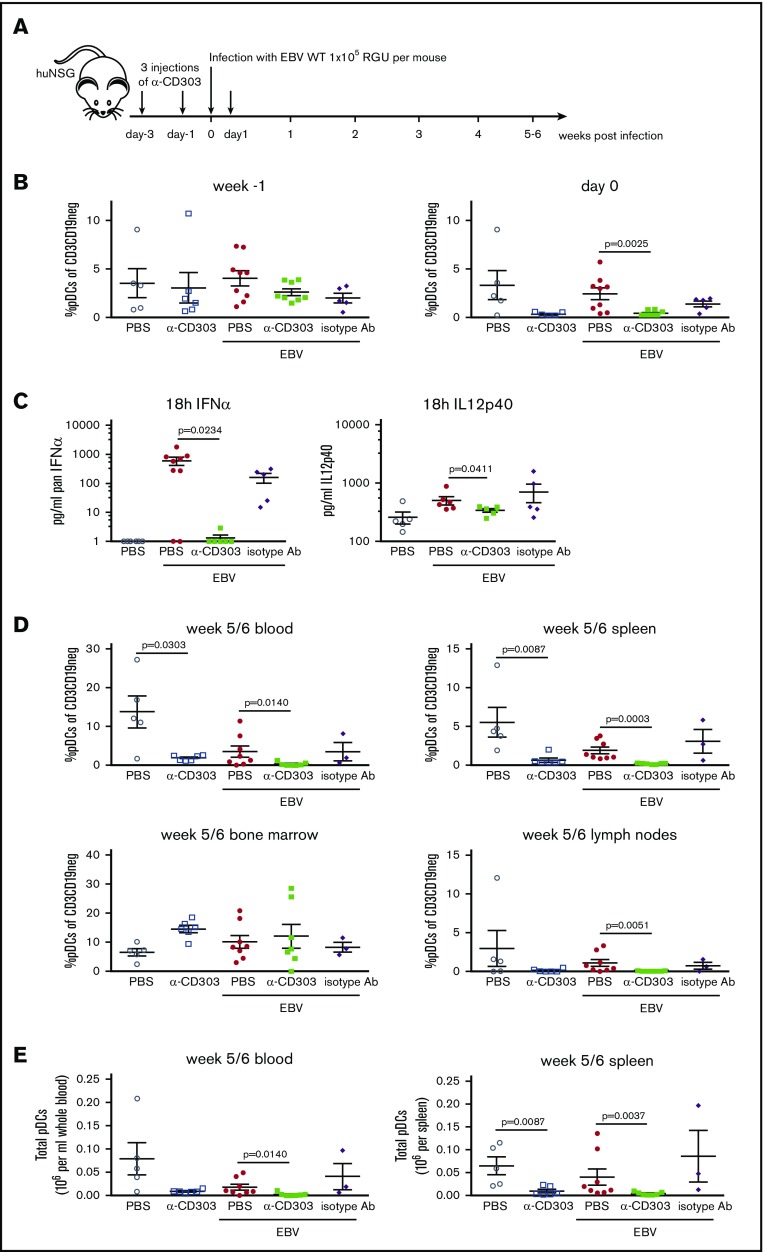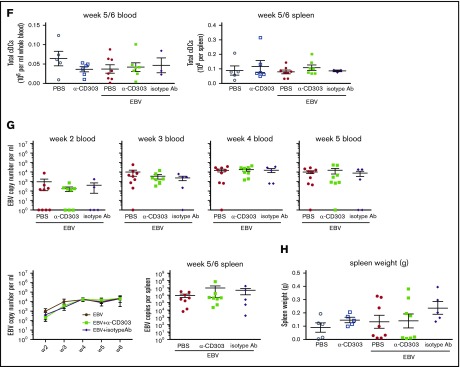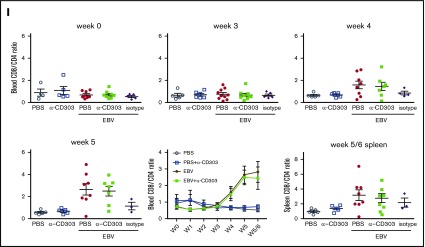Figure 7.
pDC depletion alters neither viral load nor T-cell expansion in EBV-infected huNSG mice. (A) pDCs were depleted in huNSG mice by using 3 injections of a CD303-specific antibody (anti–CD303-LFB; designated α-CD303 throughout the figures) before infection with 1 × 105 RGU EBV. Alternatively, PBS or isotype antibody treatment was used as controls (schematic depiction). (B) Percentage of pDCs was determined by flow cytometry gating on HLA-DR+, CD19–, CD3–, NKp46–, CD14CD16–, CD11c–, CD123+, and CD4+ cells (supplemental Figure 7A). Before treatment and at day 0, after 2 α-CD303 injections, the pDC depletion efficiency was analyzed. Mann-Whitney U tests were applied. (C) The impact of the α-CD303 treatment on cytokine secretion in terms of IFN-α and IL-12p40 production was measured in huNSG mice that were infected with 5 × 105 RGU EBV. Unpaired Student t tests were applied. (D) To compare the depletion efficiency of α-CD303 in the different organs, pDC frequencies were determined in processed blood, spleen, bone marrow, and lymph node cells at the time of euthanization (week 5 or 6). Mann-Whitney U tests were applied. Total pDC (E) or cDC (F) counts in blood and spleen at the time of euthanization are depicted. Mann-Whitney U tests were applied. (G) EBV viral loads were determined at weeks 2 to 5 in the blood and at the time of euthanization in the spleen. (H) Spleen weight was measured at the time of euthanization. (I) The ratio of CD8/CD4 T cells was monitored weekly in the blood and at week 5/6 in the spleen. Data were pooled from 1 independent experiment (PBS, n = 5; PBS + α-CD303, n = 5; EBV + PBS, n = 9; EBV + α-CD303, n = 8; EBV + isotype, n = 5). In the summary graphs over time (G, I), data are presented as the mean ± SEM. WT, wild-type.



